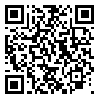BibTeX | RIS | EndNote | Medlars | ProCite | Reference Manager | RefWorks
Send citation to:
URL: http://jdm.tums.ac.ir/article-1-18-en.html
Background and Aims: Nursing Caries (NC) is a destructive form of caries because of incorrect nutritional habits in infants that affects deciduous teeth after eruption. Familiarity with the pattern of this type of caries and evaluation of its symmetrical or asymmetrical pattern is necessary for effective and scientific diagnosis and treatment. The aim was to assess the symmetrical or asymmetrical aspects of Nursing Caries in children between 3-5 years old.
Materials and Methods: In this cross-sectional study, 10 kindergartens were randomly selected by the Tehran Welfare Organization. 115 children with NC caries entered to study after examination. Written consents were obtained from the parents. The dmfs in upper primary incisors and upper and lower primary canines, as well as the first primary molars were assessed and the caries pattern in terms of symmetrical or asymmetrical aspects was evaluated. The data were analyzed by ANOVA, LSD, Chi-square and Fisher tests.
Results: In 53.9% of the children with NC, the anterior teeth were affected symmetrically, while 46.1% indicated an asymmetrical pattern. In general, 32.2% of the teeth were affected in a symmetrical pattern and 67.8% of them in an asymmetrical pattern. About the relationship between the breastfeeding from the right or left breast and the symmetrical pattern of the NC, 51% of the children were equally breastfed from both breasts. However, in the asymmetrical NC pattern with more impact in the right side of dentition, 50% of the children had been breastfed from the left side and in children with more caries in the left side of dentition, 50% of them had been breastfed from the right side (P=0.01).
Conclusion: NC has symmetrical and asymmetrical patterns. Direction of mother for breastfeeding affects the symmetrical and asymmetrical pattern of NC.
Received: 2011/12/4 | Accepted: 2012/10/21 | Published: 2013/09/16
| Rights and Permissions | |
 |
This work is licensed under a Creative Commons Attribution-NonCommercial 4.0 International License. |




